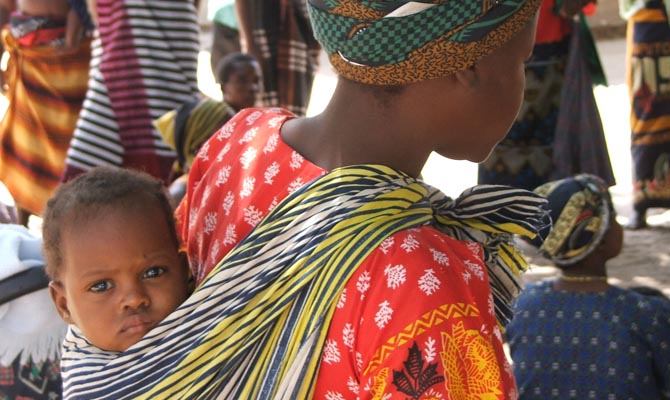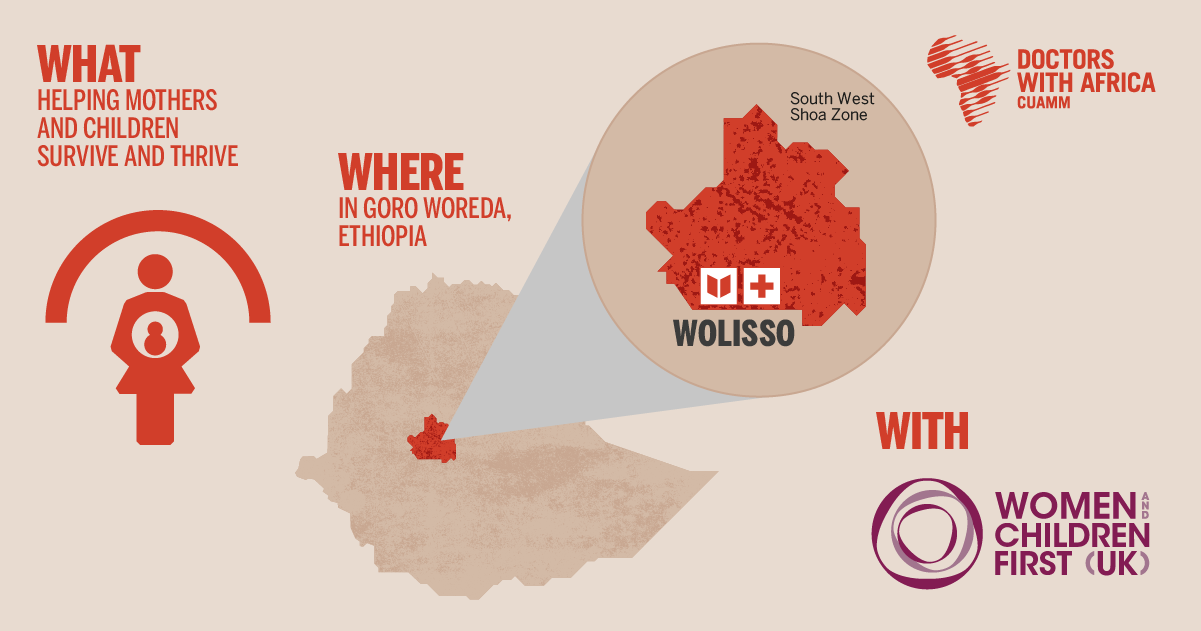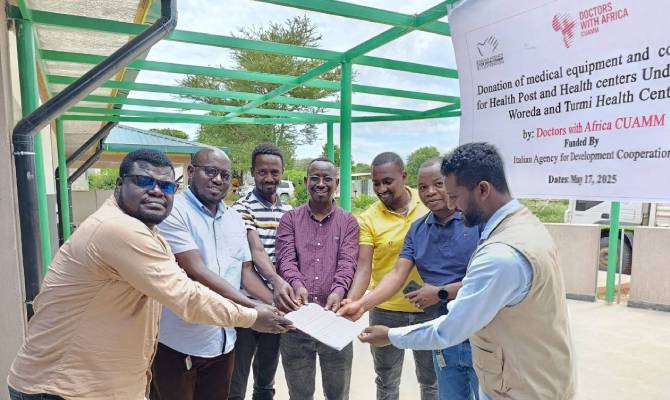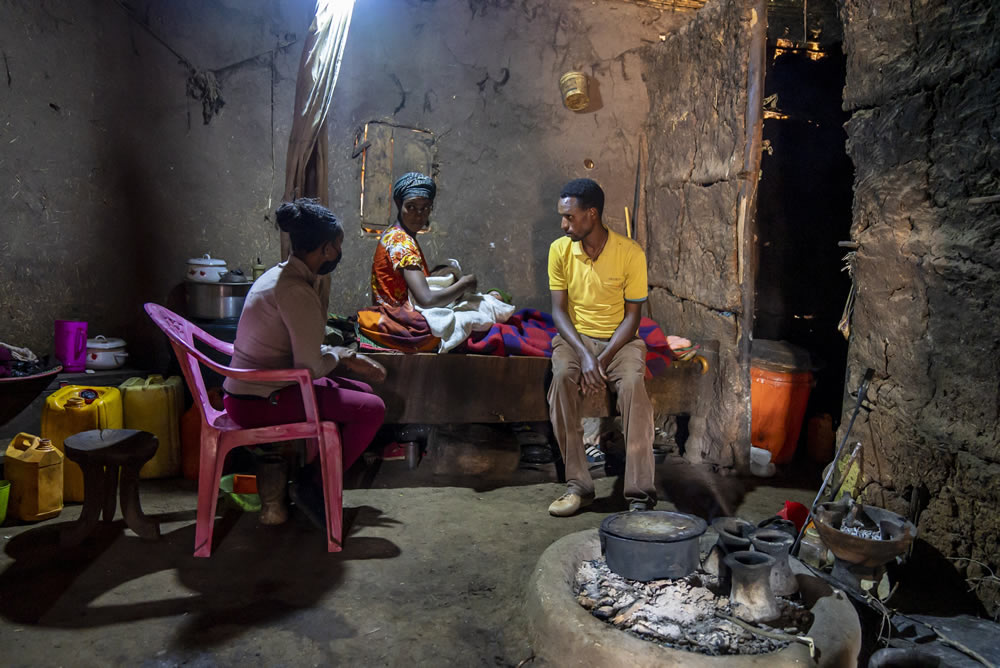
In 2022
2022 was impacted by both the direct and indirect consequences of the conflict in northern Ethiopia, in the Tigray Region, as well as the ongoing global crisis and the consequences of drought, which caused severe damage and triggered internal migration flows. The country’s economic situation worsened, with continued currency devaluation and high inflation.
Nevertheless, CUAMM’s work continued and, indeed, expanded to new areas of Ethiopia. We carried out a project in Addis Ababa in partnership with the local health authorities of Kolfe Keranio sub-city to increase vaccination coverage and contain the spread of COVID-19. We also implemented activities in partnership with the Ethiopian Ministry of Health and the Ethiopian Diabetes Association to improve diabetes services (DMT1) in 34 hospitals nationwide.
At the St. Luke Catholic Hospital in Wolisso, in the South West Shoa Zone, we ensured the presence of clinical staff to support key services such as internal medicine, pediatrics, and health management, but the difficult financial situation, high inflation, and resulting restrictions greatly reduced people’s access to the services, adding heavily to costs.
In the South Omo Zone, our maternal and child health intervention with the Jinka and Turmi Hospitals came to an end, while we bolstered our intervention in the Gambella Region in support of South Sudanese refugees living in the Nguenyyiel, Tierkidi, Kulle and Jewi camps with the aim of ensuring their access to basic health services by improving infrastructure and equipment and making available trained staff.
Our health intervention proceeded in the Somali Region’s Harawa District, and we sent mobile clinics to the southern part of the region, to Liben Zone, to support IDPs who had fled their homes due to the drought.
In the Tigray Region, despite some interruptions due to a renewed flareup of the conflict in the summer of 2022, we were able to provide support to 3 health facilities and the ambulance referral system. On 12 November 2022, a peace pact was finally signed to end the bloody two-year conflict.
Last but not least, we launched a new project in support of IDPs in the Ahmara Region in Debre Birhan that involved mobile health and nutrition clinics.
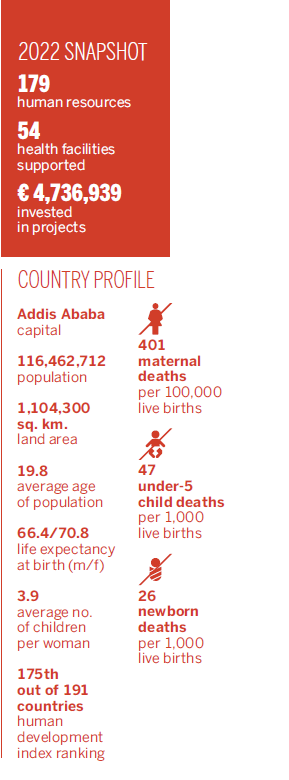
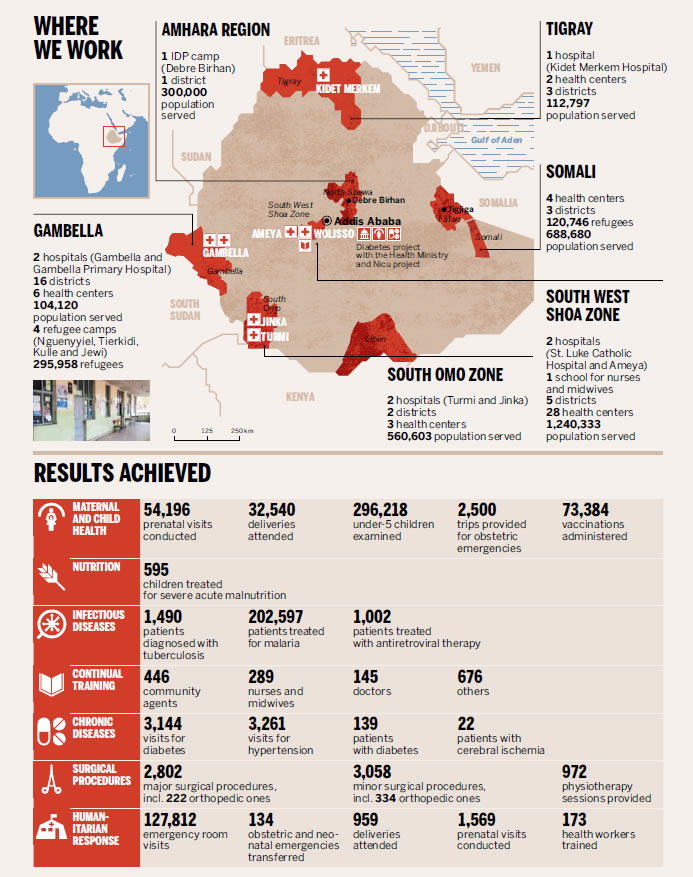
OUR HISTORY IN ETHIOPIA
1980
First doctor sent to the Gambo leprosy hospital.
1997
Agreement made with the Ethiopian Episcopalian Conference for construction of the St. Luke Catholic Hospital in Wolisso with an attached school for midwives and nurses.
2012
“Mothers and Children First” program begun.
2014
Intervention started up in South Omo.
2016
“Mothers and Children First. The First 1,000 Days” begun.
2017
Intervention including support for South Sudanese refugees started up in Gambella Region.
2018
CUAMM’s partnership with the Ethiopian Ministry of Health strengthened with launch of two technical assistance projects.
2019
Wolisso hospital recognized by Ethiopian Medical Society (through Ethiopian Health Minister Dr. Amir Aman) as best-performing hospital of the year.
2020
Project begun in Harawa District, Somali Region, with infrastructure improvement and personnel training activities.
2022
Launch of the third phase of the “Mothers and Children First” program: “People and Skills”.

